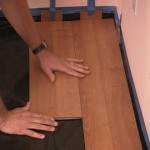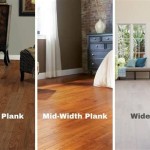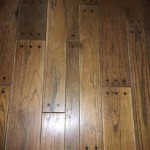How Much Would Vinyl Flooring Cost?
Vinyl flooring has become a popular choice for homeowners and businesses alike due to its durability, water resistance, ease of maintenance, and aesthetic versatility. However, one of the primary considerations when choosing flooring materials is the cost. Determining the overall cost of vinyl flooring involves several factors, including the type of vinyl, material quality, installation requirements, and geographical location. Understanding these components is essential for budgeting and making informed decisions about flooring projects.
This article provides a comprehensive overview of the costs associated with vinyl flooring, exploring the various elements that contribute to the final price. It will cover the different types of vinyl flooring available, the costs of materials and installation, regional price variations, and additional expenses that may arise during the project. By understanding these factors, readers can gain a clearer perspective on how much vinyl flooring would actually cost.
Types of Vinyl Flooring and Their Associated Costs
Vinyl flooring comes in several forms, each with its own price point and specific characteristics. The main types include sheet vinyl, vinyl tile, and luxury vinyl plank (LVP) or luxury vinyl tile (LVT). Each option offers distinct advantages and disadvantages, influencing the overall cost of the flooring project.
Sheet Vinyl: Sheet vinyl is a continuous, water-resistant flooring option that is typically sold in rolls. It is often the most economical choice, ranging from $1 to $5 per square foot for the material itself. Sheet vinyl is ideal for areas prone to moisture, such as bathrooms and kitchens, because its seamless construction minimizes the risk of water seepage. Installation costs for sheet vinyl can vary depending on the complexity of the room and the need for subfloor preparation. Professional installation costs typically range from $1 to $3 per square foot.
Factors influencing the cost of sheet vinyl include the thickness of the material, the quality of the print layer (which determines the aesthetic appeal), and the type of backing. Thicker sheets with higher-quality print layers tend to be more expensive. Installation requires careful handling to avoid bubbles and wrinkles, so professional installation is often recommended.
Vinyl Tile: Vinyl tile comes in individual squares or rectangles, offering more design flexibility than sheet vinyl. Standard vinyl tiles are generally less expensive than LVT or LVP, typically ranging from $1.50 to $4 per square foot for the materials. Vinyl tiles are relatively easy to install, making them a popular choice for DIY projects. However, professional installation can ensure a more durable and visually appealing result.
The cost of vinyl tiles depends on the design, thickness, and any special features like enhanced scratch resistance or texture. Self-adhesive tiles are a cost-effective option for small areas, while thicker, higher-quality tiles offer greater durability and a more luxurious look. Installation costs for vinyl tiles typically range from $1 to $3 per square foot when professionally installed.
Luxury Vinyl Plank (LVP) and Luxury Vinyl Tile (LVT): LVP and LVT are premium vinyl flooring options that mimic the appearance of hardwood or natural stone. These are designed for both aesthetic appeal and durability. LVP replicates the look of wood planks, while LVT resembles stone or ceramic tiles. The cost of LVP and LVT ranges from $2.50 to $7 per square foot for the materials, making them a more significant investment than basic sheet vinyl or standard vinyl tiles.
The higher cost of LVP and LVT reflects their enhanced construction, which often includes multiple layers for increased durability, realistic textures, and improved water resistance. Many LVP and LVT products feature a click-lock system for easy installation, making them a viable option for experienced DIYers. However, professional installation is recommended for optimal results, especially in larger areas or complex layouts. Installation costs for LVP and LVT typically range from $2 to $5 per square foot.
In summary, the type of vinyl flooring selected significantly impacts the overall cost of the project. Sheet vinyl is the most budget-friendly option, followed by standard vinyl tiles, while LVP and LVT represent a higher-end investment that provides greater durability and aesthetic appeal.
Material and Installation Costs Breakdown
Beyond the type of vinyl flooring chosen, the costs associated with materials and installation are crucial components of the overall budget. Understanding these costs can help homeowners plan their projects more effectively.
Material Costs: Material costs encompass the price of the vinyl flooring itself, as well as any additional supplies required for installation. These may include underlayment, adhesives, transition strips, and baseboards. The cost of these materials can vary depending on the size of the room, the type of flooring, and the quality of the products selected.
Underlayment is a thin layer of material placed beneath the vinyl flooring to provide cushioning, sound insulation, and moisture protection. While not always necessary, underlayment can significantly improve the performance and longevity of the flooring, particularly in areas with uneven subfloors. The cost of underlayment typically ranges from $0.50 to $2 per square foot.
Adhesives are required for installing certain types of vinyl flooring, such as sheet vinyl and some vinyl tiles. The type of adhesive needed will depend on the specific flooring product and the subfloor material. High-quality adhesives can cost between $30 and $60 per gallon, and the amount needed will depend on the size of the area being covered.
Transition strips are used to create a smooth transition between vinyl flooring and other types of flooring, such as carpet or hardwood. They are also used at doorways and other areas where the flooring meets a different surface. Transition strips can range in price from $5 to $20 per linear foot, depending on the material and design.
Baseboards are installed along the perimeter of the room to cover the gap between the flooring and the wall. They also provide a finished look and protect the walls from damage. The cost of baseboards can vary widely depending on the material, style, and height, ranging from $1 to $5 per linear foot.
Installation Costs: Installation costs make up a significant portion of the total flooring project budget. Professional installation ensures a high-quality result and can help prevent issues such as bubbling, warping, and premature wear. The cost of professional installation depends on several factors, including the type of flooring, the size of the room, the complexity of the layout, and the local labor rates.
For sheet vinyl, installation typically costs between $1 and $3 per square foot. This includes preparing the subfloor, cutting and fitting the vinyl, and securing it with adhesive. The complexity of the installation can increase the cost, particularly in rooms with irregular shapes or multiple corners.
Vinyl tile installation costs range from $1 to $3 per square foot. The cost may be higher if the tiles require a specific pattern or if the subfloor needs significant preparation. Self-adhesive tiles are generally less expensive to install, but the quality and durability may not be as high as professionally installed tiles.
LVP and LVT installation costs typically range from $2 to $5 per square foot. The click-lock system used in many LVP and LVT products can simplify the installation process, but professional installers have the experience and tools to ensure a flawless finish. The cost may increase if the subfloor requires leveling or if the room has intricate features.
Homeowners considering a DIY installation should factor in the cost of tools and equipment, such as a utility knife, measuring tape, straightedge, and roller. While DIY installation can save on labor costs, it requires time, patience, and attention to detail to achieve a professional-looking result.
Additional Cost Considerations
Beyond the primary material and installation costs, several other factors can influence the overall price of a vinyl flooring project. These include subfloor preparation, removal of existing flooring, and regional price variations.
Subfloor Preparation: The condition of the subfloor is a critical factor in the success of any flooring project. A smooth, level, and clean subfloor is essential for ensuring that the vinyl flooring adheres properly and lies flat. If the subfloor is uneven, damaged, or contaminated, it may require preparation before the new flooring can be installed.
Subfloor preparation can include leveling uneven areas with a self-leveling compound, repairing cracks and holes, and cleaning the surface to remove dirt, dust, and debris. The cost of subfloor preparation can vary depending on the extent of the damage and the type of repairs required. Basic subfloor preparation can cost between $0.50 and $2 per square foot, while more extensive repairs can cost $3 to $5 per square foot or more.
Removal of Existing Flooring: Removing existing flooring can add to the overall cost of the project, particularly if the old flooring is difficult to remove or requires special disposal methods. The cost of removing old flooring can vary depending on the type of flooring material and the size of the area. Removing carpet or tile can cost between $1 and $3 per square foot, while removing more challenging materials like hardwood or linoleum can cost $2 to $5 per square foot.
Disposal fees for old flooring materials can also add to the cost. Some municipalities charge fees for disposing of construction debris, while others may require special handling for certain materials like asbestos-containing flooring. It's essential to factor in these disposal costs when budgeting for the project.
Regional Price Variations: The cost of vinyl flooring and installation can vary significantly depending on the geographical location. Labor rates, material costs, and local market conditions can all influence the overall price. Areas with a higher cost of living tend to have higher labor rates, which can increase the cost of professional installation.
Material costs can also vary depending on the location. Shipping costs, local taxes, and the availability of certain products can all affect the price of vinyl flooring. It's a good idea to get quotes from multiple local flooring contractors to compare prices and ensure that you are getting a fair deal.
In summary, when estimating the cost of vinyl flooring, it's important to consider subfloor preparation, removal of existing flooring, and regional price variations. These factors can significantly impact the overall budget and should be taken into account when planning the project.

How Much Does Vinyl Flooring Installation Cost In 2025

Cost To Install Vinyl Floors The Home Depot

Cost To Install Vinyl Flooring Fixr

Luxury Vinyl Tile And Plank Flooring Installation Costs

Laminate Flooring Installation Cost Guide Hatcher S Floors

2025 Luxury Vinyl Plank Flooring Costs A Guide To Lvp

Cost To Install Vinyl Flooring Fixr

Laminate Vs Vinyl Flooring Costs Pros Cons Differences 2025

Lvt Floors Cost Estimator Estimate Florida Consulting

How Much Does Luxury Vinyl Plank Lvp Flooring Cost 2025
Related Posts








